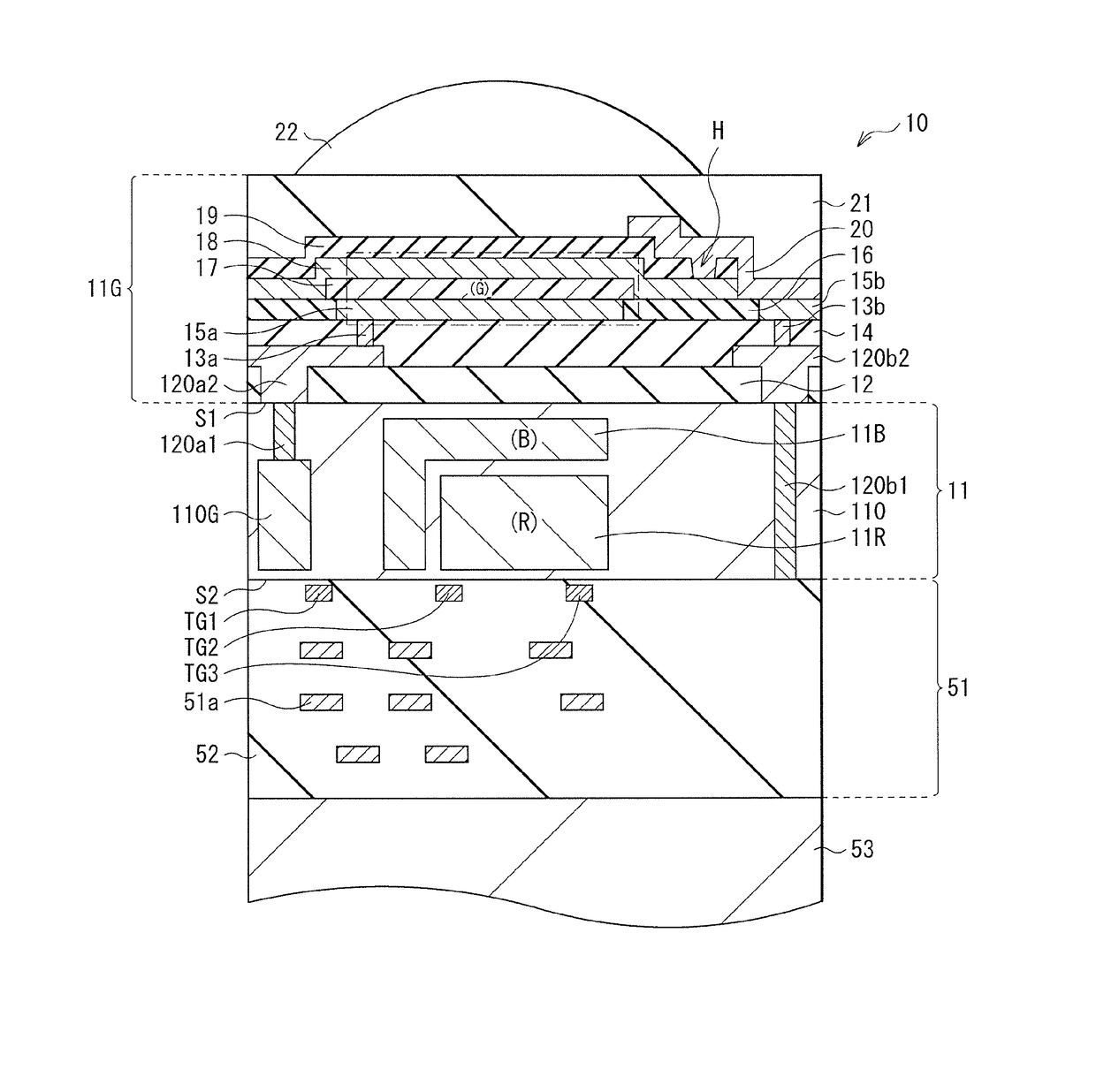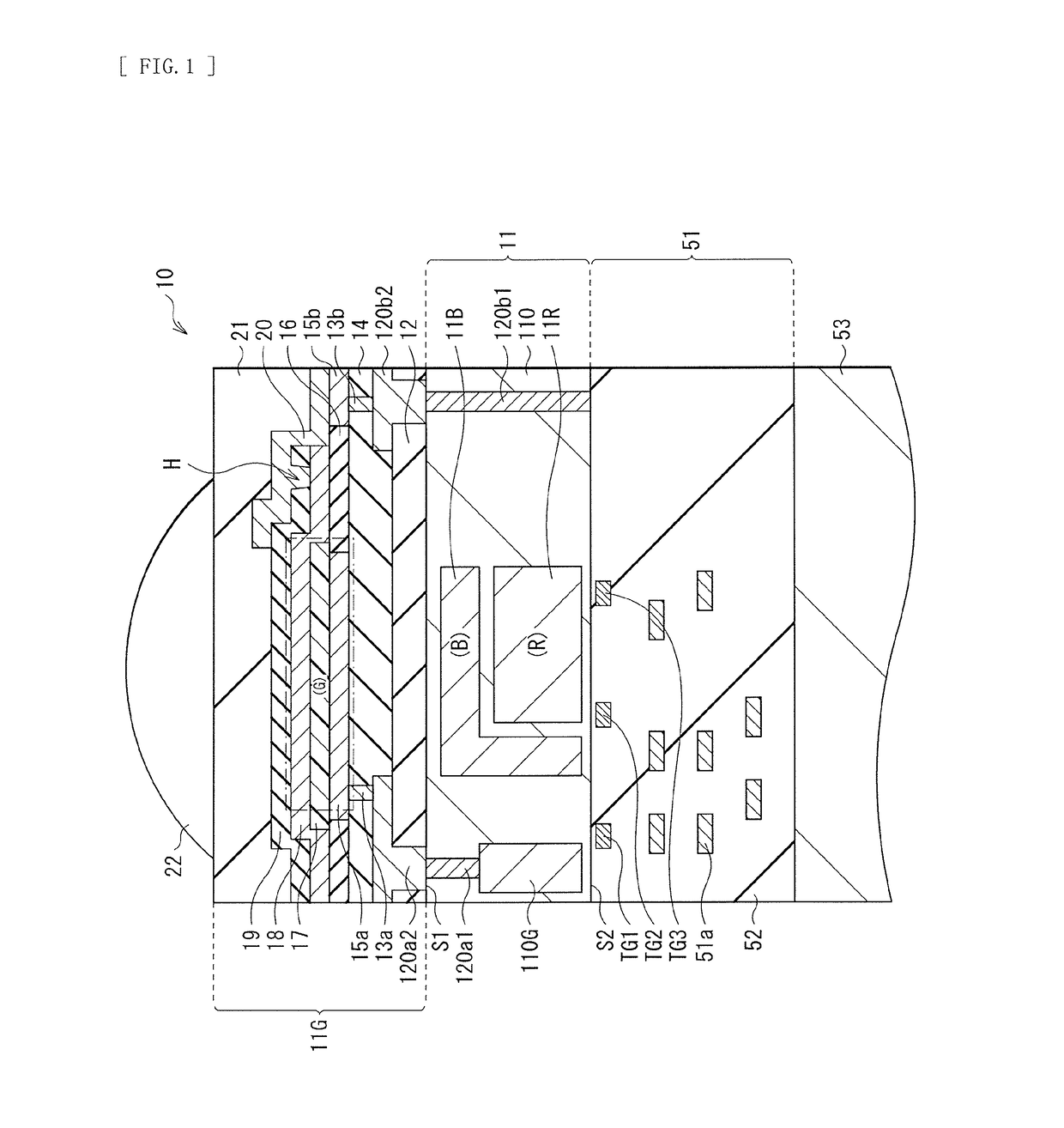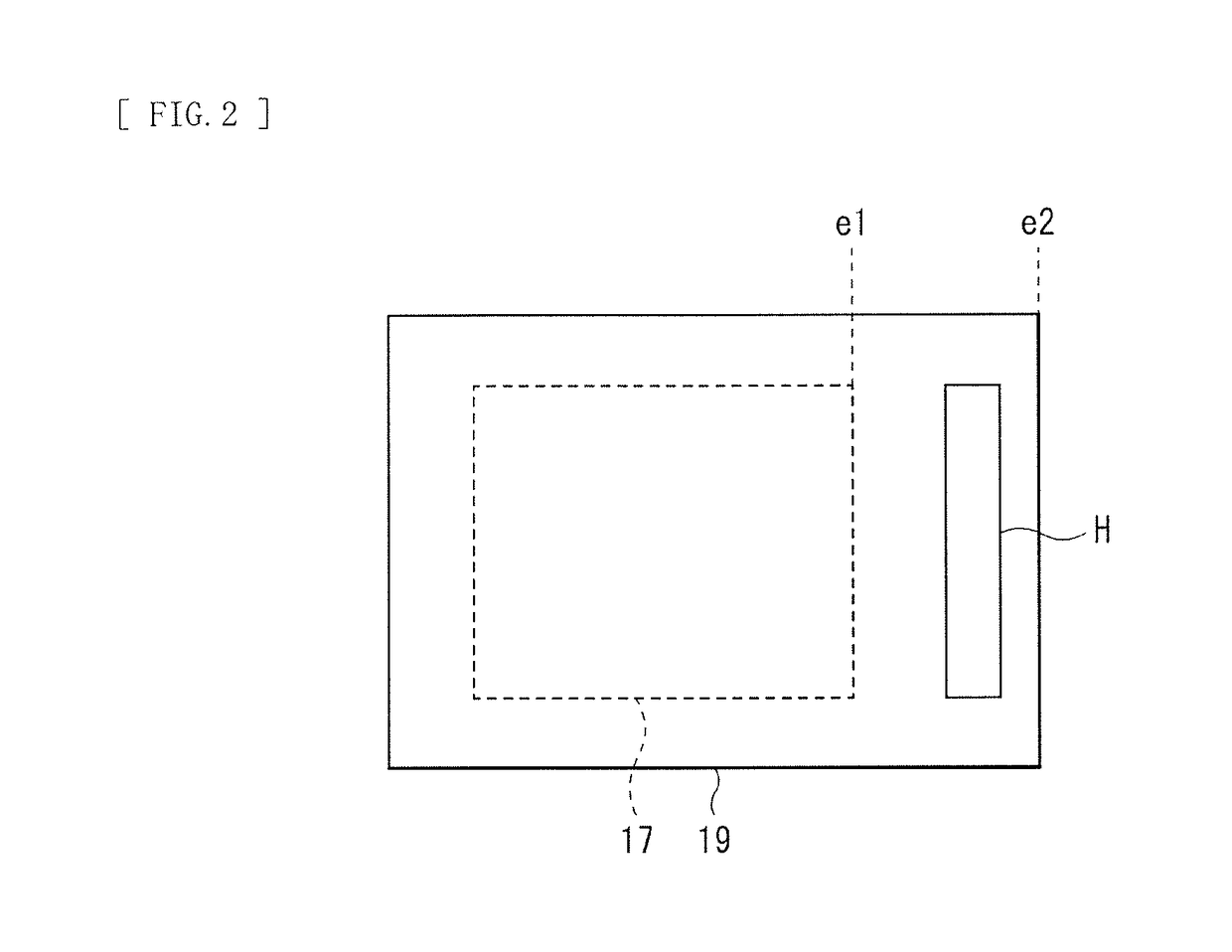Photoelectric conversion element and solid-state imaging device
a conversion element and photoelectric technology, applied in the direction of solid-state devices, semiconductor devices, radiation controlled devices, etc., can solve the problems of deterioration of other characteristics, achieve the effect of improving responsivity, improving electric charge transport efficiency, and improving hole mobility and electron mobility
- Summary
- Abstract
- Description
- Claims
- Application Information
AI Technical Summary
Benefits of technology
Problems solved by technology
Method used
Image
Examples
application examples
2. Application Examples
Application Example 1
[0115]FIG. 10 illustrates an entire configuration of a solid-state imaging device (the solid-state imaging device 1) using the photoelectric conversion element 10 described in the foregoing embodiment as the unit pixel P. The solid-state imaging device 1 is a CMOS image sensor, and includes a pixel section 1a as an imaging region and a peripheral circuit section 130 in a peripheral region of the pixel section 1a on the semiconductor substrate 11. The peripheral circuit section 130 includes, for example, a row scanning section 131, a horizontal selection section 133, a column scanning section 134, and a system controller 132.
[0116]The pixel section 1a includes, for example, a plurality of unit pixels P (each corresponding to the photoelectric conversion element 10) that are two-dimensionally arranged in rows and columns. The unit pixels P are wired with pixel driving lines Lread (specifically, row selection lines and reset control lines) fo...
application example 2
[0121]The foregoing solid-state imaging device 1 is applicable to various kinds of electronic apparatuses having imaging functions. Examples of the electronic apparatuses include camera systems such as digital still cameras and video cameras, and mobile phones having imaging functions. FIG. 11 illustrates, for purpose of an example, a schematic configuration of an electronic apparatus 2 (e.g., a camera). The electronic apparatus 2 is, for example, a video camera that allows for shooting of a still image or a moving image. The electronic apparatus 2 includes the solid-state imaging device 1, an optical system (e.g., an optical lens) 310, a shutter unit 311, a driver 313, and a signal processor 312. The driver 313 drives the solid-state imaging device 1 and the shutter unit 311.
[0122]The optical system 310 guides image light (i.e., incident light) from an object toward the pixel section 1a of the solid-state imaging device 1. The optical system 310 may include a plurality of optical l...
experiment 1
f Spectroscopic Characteristics
[0124]A glass substrate was cleaned by UV / ozone treatment. Quinacridone (QD; the formula (3-1)) was evaporated on the glass substrate by a resistance heating method in a vacuum of 1×10−5 Pa or less with use of an organic evaporation apparatus while rotating a substrate holder. Evaporation speed was 0.1 nm / sec, and a film having a total thickness of 50 nm was formed as a sample 1. In addition, in place of using QD, a sample 2 using SubPcCl (the formula (6-1)), a sample 3 using C60 (the formula (1-1)), a sample 4 using αNPD (the formula (4-2)), a sample 5 using BTBT (the formula (5-1)), a sample 59 using BQD (the formula (3-2)), and a sample 60 using rubrene (the formula (8)) were fabricated, and spectroscopic characteristics of the respective samples were evaluated.
[0125]Transmittance and reflectivity for each wavelength were measured with use of an ultraviolet-visible spectrophotometer to determine absorptivity (%) of light absorbed by each of single-l...
PUM
 Login to View More
Login to View More Abstract
Description
Claims
Application Information
 Login to View More
Login to View More - R&D
- Intellectual Property
- Life Sciences
- Materials
- Tech Scout
- Unparalleled Data Quality
- Higher Quality Content
- 60% Fewer Hallucinations
Browse by: Latest US Patents, China's latest patents, Technical Efficacy Thesaurus, Application Domain, Technology Topic, Popular Technical Reports.
© 2025 PatSnap. All rights reserved.Legal|Privacy policy|Modern Slavery Act Transparency Statement|Sitemap|About US| Contact US: help@patsnap.com



